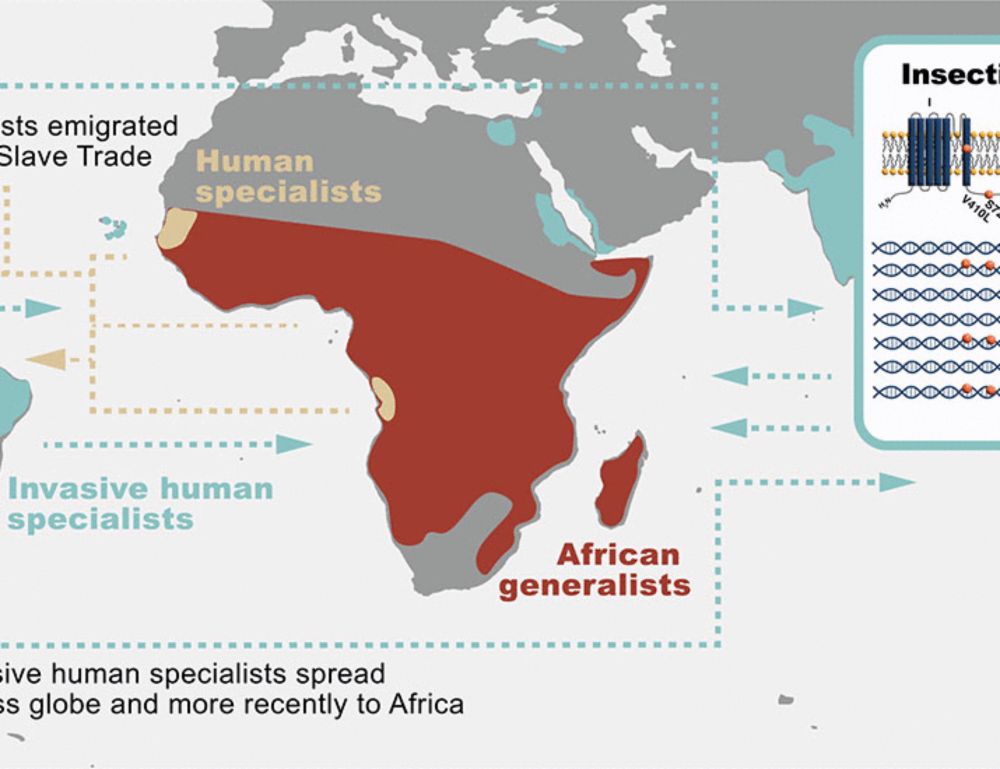

2 job adverts on a NERC project w myself + @darrenobbard.bsky.social on “What determines the virome: ecology and the environment, evolution, or species history?” early 2026 in
@uniexecec.bsky.social
- Postdoc: jobs.exeter.ac.uk/hrpr_webrecr...
- RA: jobs.exeter.ac.uk/hrpr_webrecr...
Pls share!
25.09.2025 15:55 — 👍 22 🔁 33 💬 2 📌 1
Huge thanks to @gonzalezlabbcn.bsky.social for her invaluable contribution as a member of Alexander Bergman's PhD jury and for the stimulating discussions that ensued. It was a great opportunity to chat about #transposons in #mosquitoes and #Drosophila!
25.09.2025 12:26 — 👍 3 🔁 0 💬 0 📌 0
WOW! Systematic testing of 2 #Wolbachia strains for their ability to block transmission of 60 genetically diverse #DENV isolates in #mosquitoes shows substantial heterogeneity and suggests potential long-term selection risks in Wolbachia-based control interventions.
20.09.2025 10:47 — 👍 3 🔁 0 💬 0 📌 0

Genetic study of malaria-carrying mosquitoes tracks evolution of insecticide resistance | Natural History Museum
It crucially also reveals promising genetic targets for potential control.
www.nhm.ac.uk/discover/new...
Mosquitoes that have been in the collection for nearly a hundred years are helping us in dealing with an even older but also current problem - malaria
@sangerinstitute.bsky.social @nhm-london.bsky.social
19.09.2025 11:53 — 👍 26 🔁 10 💬 0 📌 0
@elodiecouderc.bsky.social is on 🔥 this month ! Our review (which the literature really missed, imho) giving an historical perspective on the methods used to study of mosquito-virus interactions in now online at @cp-trendsmicrobiol.bsky.social. Check it ou here: www.cell.com/trends/micro...
01.09.2025 13:26 — 👍 6 🔁 2 💬 0 📌 0
Virology lost one of his monuments, David Baltimore. To learn more about him and his contributions, I recommend (re)-listening to this great TWIV episode : www.microbe.tv/twiv/twiv-10...
08.09.2025 12:58 — 👍 6 🔁 5 💬 0 📌 0
New #review out 🚨 for mosquito enthusiasts 🦟 !
Have you ever questioned the approach you routinely use to investigate #mosquito-virus #interactions? ⬇️
www.sciencedirect.com/science/arti...
29.08.2025 14:27 — 👍 16 🔁 7 💬 2 📌 1
YouTube video by Institut Pasteur
La dengue aux commandes
Does #dengue virus hijack #mosquitoes' brain? Study led by Felix Hol @pasteur.fr discovered that infected mosquitoes take smaller blood meals. As a result, they bite more often, and potentially infect infect more people.
(video in French with English subtitles available)
youtu.be/2u_qckfAQa4?...
28.08.2025 11:42 — 👍 27 🔁 7 💬 0 📌 1
Blood, sweat, and beers: investigating mosquito biting preferences amidst noise and intoxication in a cross-sectional cohort study at a large music festival https://www.biorxiv.org/content/10.1101/2025.08.21.671470v1
26.08.2025 13:45 — 👍 16 🔁 7 💬 0 📌 8
Our discovery suggests a mechanistic link between DENV susceptibility and insecticide resistance. Cytochrome P450 enzymes, known drivers of such resistance in mosquitoes, add complexity to this interaction and highlight new research avenues.
18.08.2025 10:31 — 👍 1 🔁 0 💬 0 📌 0
Through infection assays, transcriptomics, gene silencing, and transgenesis, we have identified the CYP4G15 gene as a key player. Variants in its promoter significantly impact DENV infection in Ae. aegypti, marking the 1st definitive identification of genetic variants linked to DENV susceptibility.
18.08.2025 10:29 — 👍 1 🔁 0 💬 1 📌 0
Despite decades of research focusing mostly on immune genes, causal genetic variants for DENV susceptibility in mosquitoes have been hard to pin down. Our work instead spotlights how metabolic pathways—specifically, cytochrome P450 enzymes—play a key role in shaping mosquito-virus interactions.
18.08.2025 10:20 — 👍 1 🔁 0 💬 1 📌 0

Dengue virus susceptibility in Aedes aegypti linked to natural cytochrome P450 promoter variants
Nature Communications - Genetic factors affecting Aedes aegypti susceptibility to dengue virus infection aren’t well studied. Here the authors show that a cytochrome P450 gene, typically...
🦟🦠 Check out our latest article in @natcomms.nature.com on the genetic basis of #dengue virus susceptibility in #mosquitoes! Collaborative work brillantly led by @merklinglab.bsky.social and @elodiecouderc.bsky.social @pasteur.fr and primarily supported by @agencerecherche.bsky.social rdcu.be/eBbg7
18.08.2025 10:08 — 👍 36 🔁 10 💬 1 📌 1
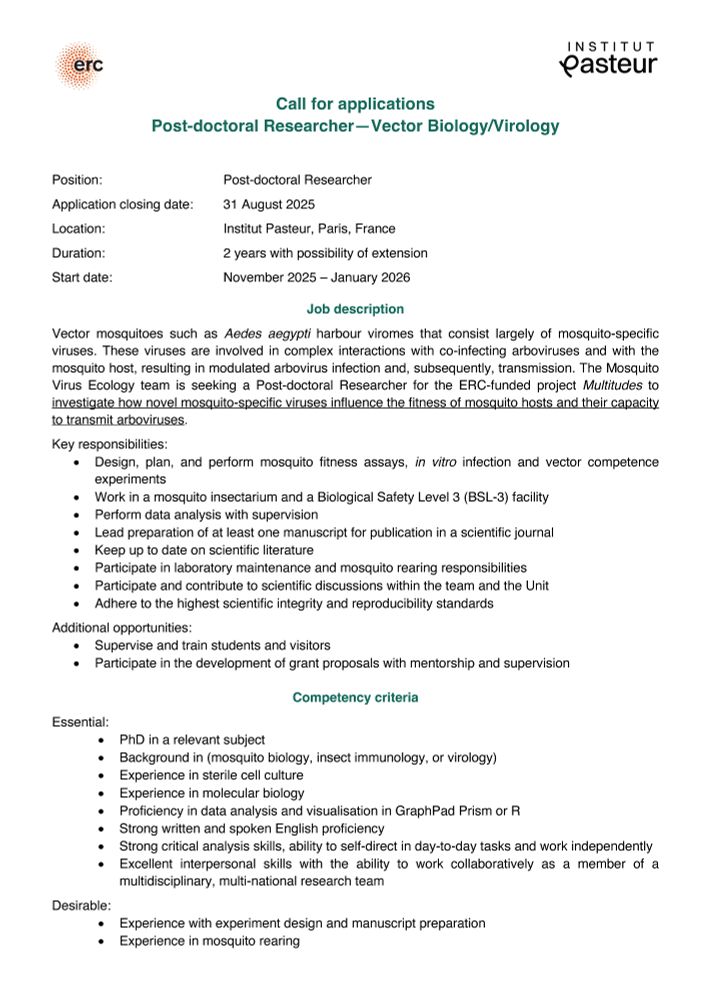
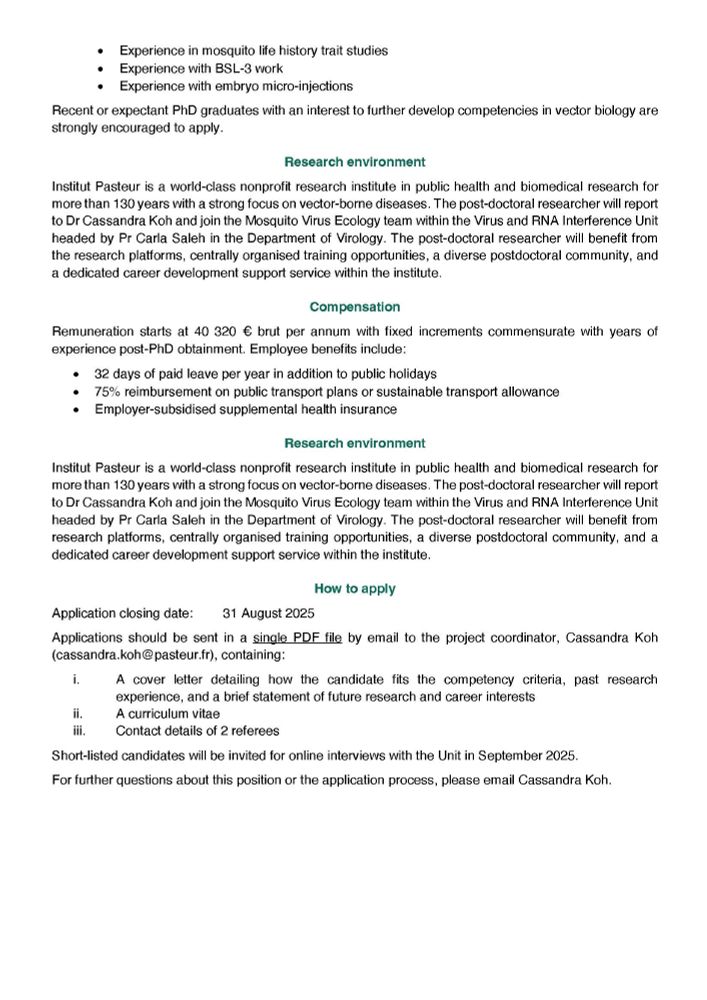
📣 I'm recruiting a postdoc researcher to join my team for a project on mosquito-specific viruses and host interactions. Peep the job description & how to apply below. Perfect for soon-to-be or recent PhD graduates in mosquito vector biology 🦟 or arbovirology 🦠
🗓️ Application deadline 31 August 2025
28.07.2025 09:25 — 👍 56 🔁 61 💬 1 📌 0
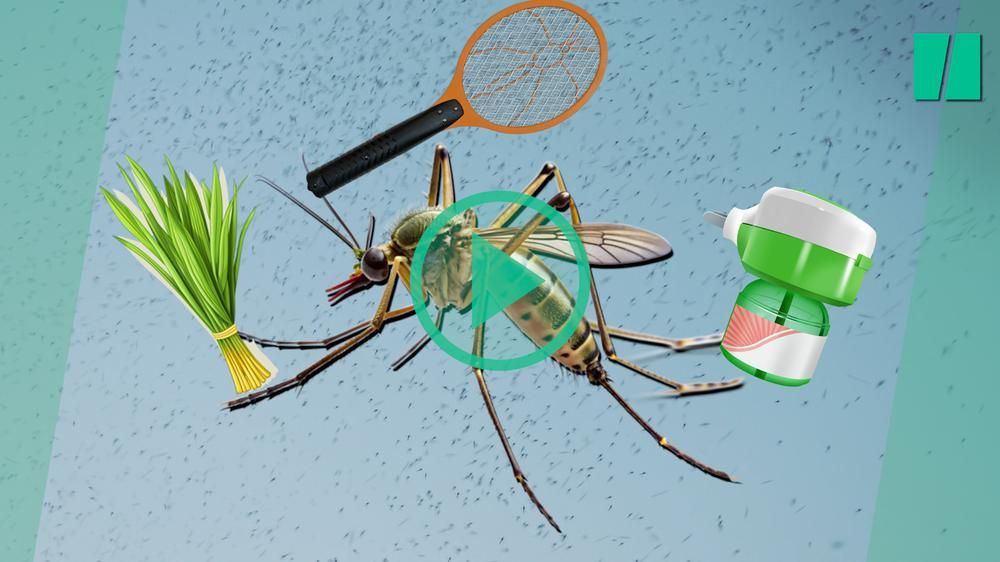
Moustiquaire ou citronnelle ? Comment se protéger vraiment des moustiques
Moustiquaire ou citronnelle ? Comment se protéger vraiment des moustiques
03.08.2025 05:30 — 👍 6 🔁 2 💬 0 📌 1
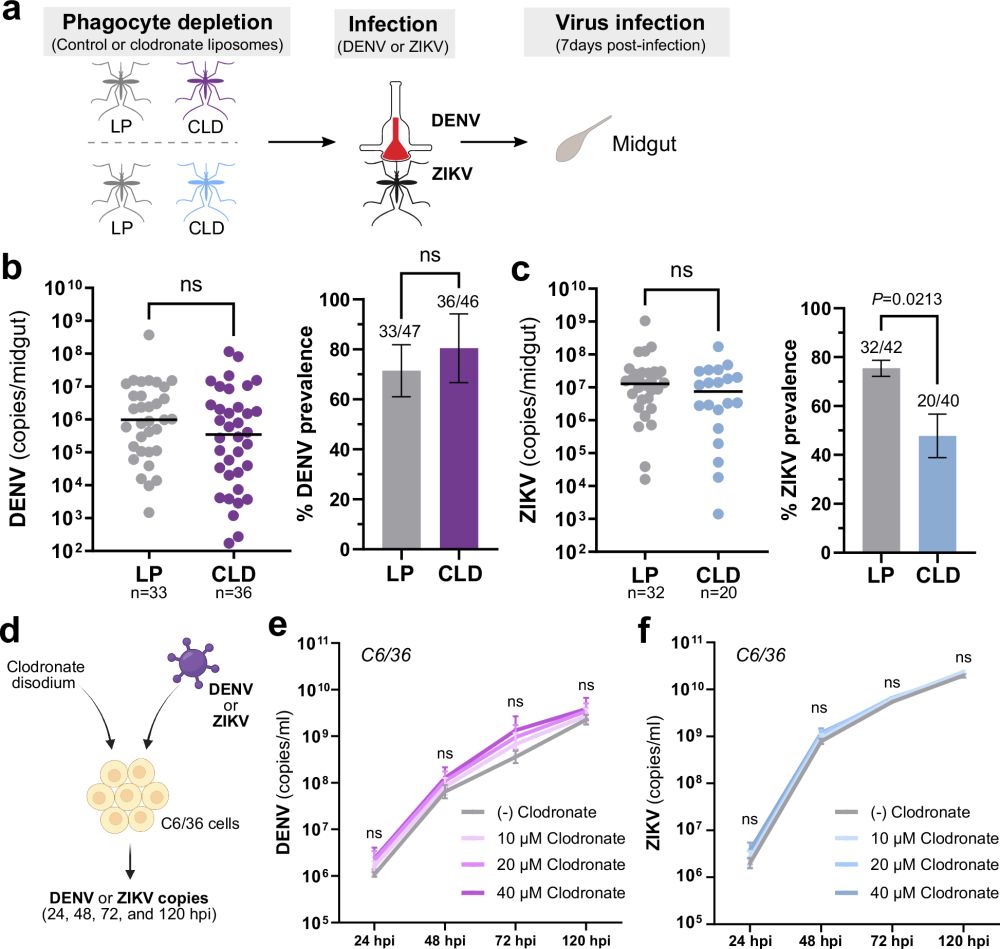
Mosquito immune cells enhance dengue and Zika virus infection in Aedes aegypti
Nature Communications - Infection of mosquito immune cells by dengue and Zika virus enhances the spread of virus infection to mosquito tissues, such as the salivary glands, to promote virus...
Despite all the shit going on, we have to celebrate our victories. New publication with @entomososwin.bsky.social and @vectorimmunity.bsky.social showing that hemocytes play a central role in disseminating flaviviruses to secondary tissues potentially functioning as a Trojan Horse(TBD)
rdcu.be/euj4g
01.07.2025 15:02 — 👍 38 🔁 13 💬 1 📌 1
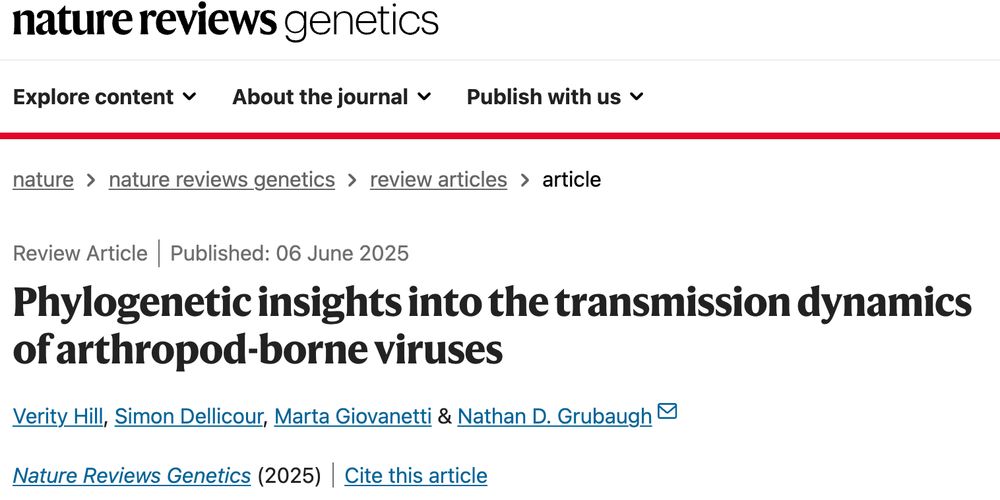
Interested in using phylogenetics to study arboviruses? Our new review in @natrevgenet.nature.com by @viralverity.bsky.social, @sdellicour.bsky.social, and Marta Giovanetti has you covered!
📖 👉 rdcu.be/epH2U
Short 🧵
09.06.2025 14:02 — 👍 51 🔁 23 💬 2 📌 0
Just few days left to apply to one of these postdoc positions in my infectious disease modelling Unit at @pasteur.fr in Paris!
23.06.2025 05:24 — 👍 25 🔁 22 💬 1 📌 0
Evolutionary Virologist based at the University of Tokyo 🇯🇵
💻🦠🏳️🌈
Compte officiel de Santé publique France, l'agence nationale de santé publique. #santé, #veillesanitaire, #alertesanitaire, #prévention, #réservesanitaire
professor at Institut Pasteur. Bacterial genomics, vaccine-preventable diseases, antimicrobial resistance, bioinformatics and public heath applications. International capacity building and teaching. Klebsiella diphtheria whooping cough genomic librairies
Malaria scientist, Biology Teacher, Sustainability, coffee, books, hiking, arts
Population Geneticist at INRAE (France)
Chair in Virology and Emerging Infectious Diseases, Liverpool School of Tropical Medicine.
Arboviruses, emerging viruses, viruses of parasites!
PostDoc in @Merkling_lab x @InstitutPasteur within Insect-Virus Interactions @LambrechtsLab I 🦟 x 🦠Metabolomics & Single-cell @EMN_MetSoc committee
Virologist, insect viruses - good ones and bad ones
Dr. Norbert Perrimon's lab at Harvard Medical School researches functional genomics, cell circuitry, and tissue homeostasis in Drosophila melanogaster.
https://perrimon.med.harvard.edu/
Professor of Biology at University of Cincinnati.
Post-doc (D.V.M.) 🇯🇵. My interests👉 Arbovirus 🦠 | Mosquito and tick 🦟 | Zoonosis 🌏 | Dance, Capoeira, Mts. 💃🤸⛰️ | 2021- Institut Pasteur
Piwi and piRNA and pugs enthusiast. Tennis on occasions. http://laulab.bu.edu
Associate Professor, Biochemistry Dpt & School of Neuroscience at Virginia Tech. Disease vector insects, medical entomology, neuroethology, mosquitoes.
Our lab investigates humoral immune responses to human pathogens with a focus on HIV-1, Hepatitis viruses & emerging infections, and a dual interest in basic and translational research.
All becomes clearer with a historical and evolutionary perspective. Genomics, Metagenomics, Ancient DNA, Bioinformatics: my tools to interrogate life on Earth.
Researcher PI @CIRI_Lyon @CNRS @ENSdeLyon
Functional evolution of virus-host interactions. Impact on cross-species transmissions. 🦇 🦍 🦠 🧬 🌳
Virus spotter. You're twistin' my melon man.
Research unit at @pasteur.fr.
Interested in interactions between zoonotic RNA viruses and host cells (including those from animal reservoirs)
Lab logo by @virolicious.bsky.social
Profile picture by @nellsaunders.bsky.social







